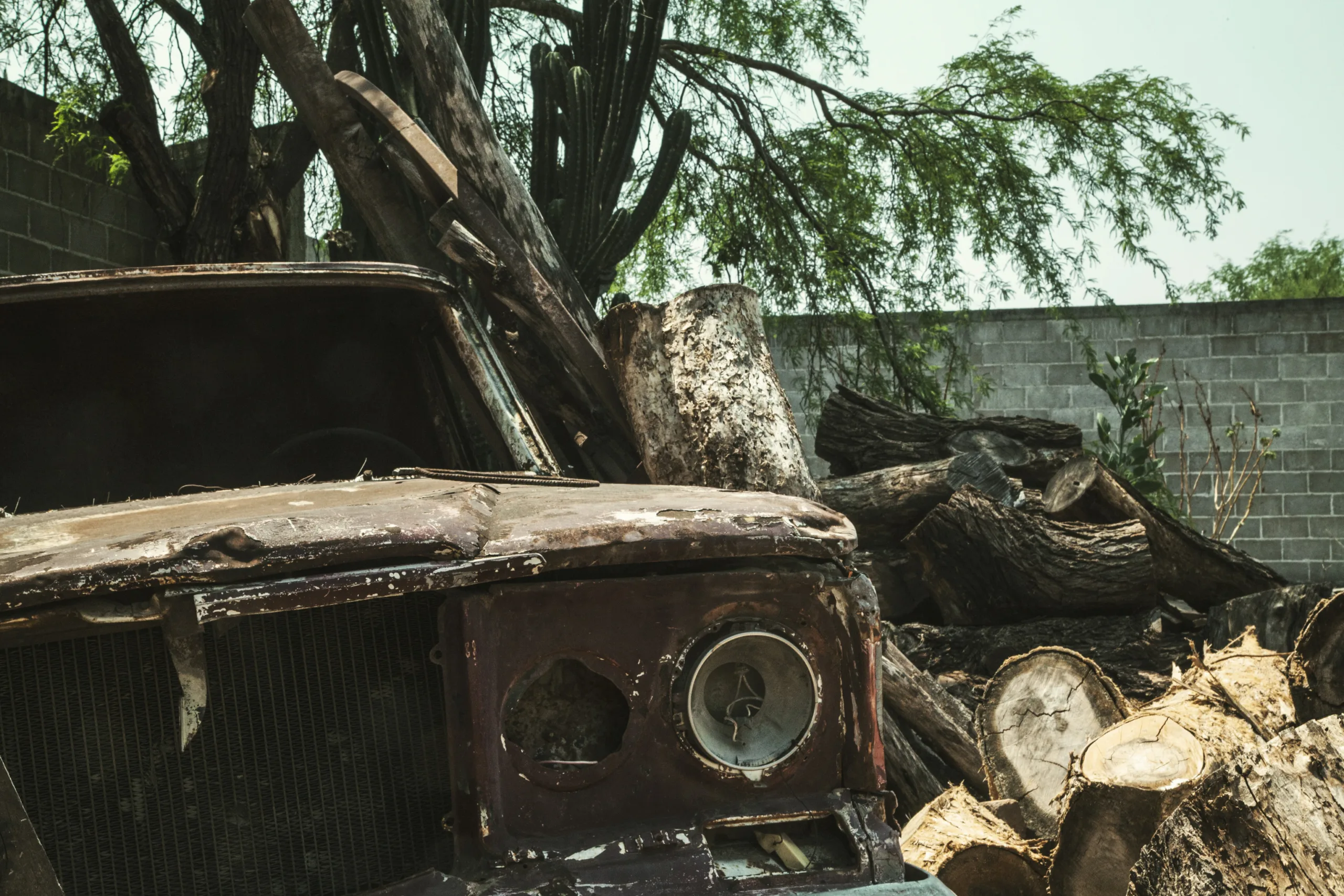Do you have a willow tree close to your home? Have you noticed any signs of damage to your foundation? If so, it may be time to learn about how willow trees can damage foundations. In this article, we’ll discuss the potential impact of willow trees on foundations and what steps should be taken to protect it. We’ll also look at some of the warning signs that indicate a problem is developing and how to prevent future damage. By the end of this article, you’ll know what to look out for and how to protect your home from willow tree damage.
Willow trees are often large and their root systems can grow quite extensive, which can cause damage to the foundations of buildings when their roots penetrate them. The shallow root systems of willow trees can also absorb moisture from the soil around a building, causing heaving and cracking in foundations.
Types of Willow Trees Susceptible to Foundational Damage
Willow trees are a common sight in many parts of the world, with their graceful branches and iconic weeping form. Unfortunately, some types of willow trees are more prone to damage to foundations than others. The most common types of willow trees susceptible to foundational damage include weeping willows (Salix babylonica), black willows (Salix nigra) and white willows (Salix alba). These species are known for their shallow root systems which can cause problems for structures such as houses and roads.
Weeping willows have been known to cause significant structural damage due to their expansive root system. Their roots can reach up to 15 feet away from the trunk, making them particularly destructive when it comes to foundations. Weeping willows should be planted at least 15 feet away from any type of structure or foundation in order to prevent them from causing any damage.
Black willows also have very shallow root systems which can cause damage if they are planted too close to structures or foundations. These trees have been known to grow up to 40 feet tall and their roots can extend up to 20 feet away from the trunk. It is important that black willows are planted at least 20 feet away from any structure or foundation in order avoid potential problems with foundational damage.
White willows also have shallow root systems which can cause problems if they are planted too close to structures or foundations. These trees can reach heights of up to 50 feet and their roots can spread out up 25 feet away from the trunk. It is important that white willows are planted at least 25 feet away from any structure or foundation in order avoid potential problems with foundational damage.
In order to prevent any potential issues with foundational damage caused by these types of willow trees, it is important that they are planted far enough away from structures or foundations so that their roots do not come into contact with them. If these types of trees must be planted near a structure or foundation, then proper precautions should be taken beforehand in order ensure that there is no risk of structural damage being caused by the tree’s roots.
Potential Consequences of Willow Tree Damage to Foundations
The roots of willow trees spread wide and deep, making them a common cause of foundation damage. When the roots of willow trees grow too close to a building’s foundation, they can cause the soil underneath to shift, leading to cracks in the walls and floors. In some cases, the tree roots may even penetrate through the foundation, resulting in costly repairs. Additionally, when willow trees grow too close to foundations they can also cause water damage due to clogged gutters or drainage systems.
The effects of willow tree damage can be particularly severe if they are left unaddressed for an extended period of time. The shifting soil caused by root growth may lead to structural instability in the foundation and walls, making it more vulnerable to collapse if not repaired promptly. If left unaddressed for too long, water damage caused by clogged gutters or drainage systems can also lead to mold growth and other problems that can be costly and dangerous if not addressed promptly.
It is important for homeowners with willow trees growing near their foundations to monitor any signs of potential damage and take steps to address it as soon as possible. Regular inspections by a qualified professional are recommended in order to identify any potential issues before they become more serious and expensive problems. Taking preventive measures such as keeping gutters clear and ensuring proper drainage around the foundation can also help reduce the likelihood of future problems due to tree root growth.
Signs of Willow Tree Damage on Foundations
Willow trees can cause serious damage to foundations due to their shallow root systems, which can be easily damaged by wind, rain, and other natural occurrences. It is important to recognize the signs of willow tree damage on foundations in order to take the necessary steps to prevent further damage. Here are some common signs that a willow tree is causing or may cause damage to a foundation:
1. Cracks in walls, floors, and foundations – Cracks in walls and floors are often the first sign of willow tree damage to a foundation. The roots of the willow tree can cause the ground beneath a foundation to shift and move, resulting in cracks appearing in walls and floors.
2. Uneven or sinking ground – Uneven or sagging ground around a home is another sign that willow tree roots may be causing damage to a foundation. The roots can cause the soil to settle unevenly around the foundation, resulting in an uneven or sunken look around the building.
3. Leaning or cracked walls – If walls start leaning or cracking, it could be an indication that willow tree roots are impacting the foundation of the building. The roots can cause pressure on one side of the wall, resulting in it leaning or cracking over time.
4. Separation from other structures – If there is noticeable separation between adjacent structures such as patios or decks and buildings, then it could be an indication that willow tree roots are causing problems with the foundation. The roots can cause shifts in the ground beneath these structures which results in them becoming separated from each other over time.
It is important to pay close attention to these signs as they may indicate that a willow tree is damaging your foundation and needs immediate attention before more serious problems arise. If you suspect that a willow tree is damaging your foundation, contact an experienced arborist right away for advice on how best to address the issue before it becomes worse.
Preventing Willow Tree Damage to Foundations
Willow trees are a popular choice for landscaping, as they are attractive, fast-growing, and have the added benefit of providing shade. However, if planted too close to a building’s foundation, their large root system can cause serious damage over time. To prevent this from happening, there are a few steps you can take.
First and foremost, it is important to keep an eye on the growth of the tree. If planted too close to your foundation, its roots may begin to penetrate and erode the soil beneath your home or building. This can lead to cracks in the foundation walls and even structural damage over time. Planting willows at least 10 feet away from your foundation is recommended to ensure that their roots don’t cause any problems.
It is also important to properly maintain your willow tree by pruning it regularly. This will help keep its growth in check and reduce the likelihood of it causing damage to your foundation. If you notice any roots that appear to be growing toward your house or building’s foundation, they should be removed immediately using root pruners or loppers.
Finally, if you want to protect your home’s foundation without cutting down or damaging the tree itself, consider installing a root barrier around it. These barriers are typically made of concrete or heavy plastic and are designed to create an impenetrable barrier between the tree’s roots and the soil beneath your building’s foundation.
By taking these steps, you can enjoy all of the benefits of having a willow tree in your yard without worrying about it causing any damage to your home or building’s foundation in the future.

Removing a Willow Tree Near a Foundation
A willow tree near a foundation can present several problems. The roots can cause structural damage to the foundation, and the leaves create an abundance of debris that can clog gutters and downspouts. Additionally, the tree itself can be subject to disease and pests, which could spread to other plants in the landscape. Fortunately, there are a few methods for safely removing a willow tree near a foundation.
The first method for removing a willow tree is to use mechanical equipment such as an excavator or backhoe. This requires skill and experience with heavy machinery and is best left to professionals who are experienced in this type of work. It’s important to note that this method can cause significant damage to the surrounding area, so it should only be used as a last resort.
The second method is to use chemical herbicides to kill the tree. This method requires preparation and care, as herbicides must be applied properly and according to manufacturer’s instructions in order for them to be effective. Additionally, nearby plants should be protected from any drift of herbicide that may occur during application. Once the tree has been killed, it can then be cut down using traditional methods such as saws or chainsaws.
The third method is manual removal. This involves cutting down the tree by hand using hand tools such as saws or axes. It’s important to note that this method can be dangerous if not done properly, so it’s best left up to professionals who have experience with this type of work. Additionally, this method may not completely remove all of the roots from the ground, so they should be removed manually afterward.
No matter what method you choose for removing a willow tree near your foundation, it’s important that you take proper safety precautions and follow all manufacturer instructions when using any chemicals or heavy machinery. Additionally, make sure you hire experienced professionals if you’re not comfortable doing it yourself. With these tips in mind, you’ll be able to safely remove a willow tree near your foundation without damaging your property or causing harm to yourself or others.
Inspection of Willow Trees Near a Foundation
Willow trees are a type of deciduous tree that can be found in many areas around the world. They are known for their beautiful weeping branches and vibrant yellow-green foliage. They are also known for their shallow root systems, which can cause problems when they are planted too close to foundations. For this reason, it is important to inspect willow trees near a foundation to ensure that there is no potential damage to the structure.
To begin an inspection of willow trees near a foundation, it is important to identify the species of tree and take note of its size and location in relation to the foundation. The size and age of the tree should be assessed as well, as larger trees may have deeper roots that could cause greater damage. If the tree is located within 10 feet of the foundation, then closer inspection should be done to determine if there are any visible signs of damage or potential hazards associated with its roots.
The next step in inspecting willow trees near a foundation is to look for signs of root damage such as cracks or fractures in the foundation walls, or large indentations or bulges in the soil around the base of the tree. If any such signs are present, then further investigation should be done to determine the extent of potential root damage that may have occurred over time. Additionally, if there is evidence that roots have been growing into drains or sewers, these must be investigated and removed as soon as possible before further damage occurs.
Finally, it is also important to take note of any existing landscaping features such as retaining walls or drainage systems that may also be affected by any potential root growth from nearby willow trees. By thoroughly inspecting willow trees near a foundation, homeowners can help protect their property from costly repairs due to root damage caused by these types of deciduous trees.
Treatment Options for a Foundation Damaged by a Willow Tree
Foundations that are damaged by a willow tree can be difficult to repair, but there are several treatment options available. The most common approach is to remove the tree and its roots, which can help prevent further damage to the foundation. Additionally, any soil around the foundation should be removed and replaced with new soil that is properly compacted. This can help ensure that the foundation is stable and not affected by shifting soil.
In some cases, it may be necessary to install a root barrier or root guard around the foundation. This can help prevent future roots from growing into or near the foundation and causing damage. Additionally, this can help protect against potential water infiltration from rain or runoff that could also cause damage.
In severe cases, it may be necessary to have structural repairs done on the foundation itself in order to restore it to its original condition. This could include replacing damaged walls or beams, as well as stabilizing any cracked concrete or masonry work. A structural engineer should be consulted in order to determine what type of repairs are needed and how extensive they need to be in order for the foundation to remain strong and stable.
Depending on the extent of the damage caused by the willow tree, other treatments may also need to be considered in order to protect against further damage in the future. These could include sealing any cracks or gaps in the walls or flooring of the building, as well as replacing any damaged shingles on a roof or exterior cladding if necessary.
It is important for homeowners to take action quickly if they notice signs of damage caused by a willow tree near their home’s foundation. By following these treatment options, homeowners can help keep their foundations safe from further damage and keep their homes secure for years to come.

Conclusion
Willow trees have the potential to cause damage to foundations, but this can be avoided if they are planted and maintained in the right way. Property owners should be aware of the potential risks and take steps to mitigate them. This includes planting willow trees some distance away from the foundation, and making sure any existing trees are regularly pruned. Furthermore, if any signs of foundation damage are noticed then these should be investigated and addressed immediately.
Ultimately, when planted and maintained correctly, willow trees can provide numerous benefits without posing a threat to foundations. They can provide shade and wind protection, as well as adding visual appeal to gardens and properties. With a little attention though, property owners can ensure that these benefits are not outweighed by the potential damage caused by willow trees.

My interest in trees started when I first saw the giant sequoias in Yosemite.
I was a teenager then, and I remember thinking, “I need to learn more about this.”
That moment stuck with me.
A few years later, I went on to study forestry at Michigan Tech.
Since graduating, I’ve worked in a mix of hands-on tree care and community education.
I’ve spent over ten years helping people understand how to plant, maintain, and protect the trees in their neighborhoods.
I don’t see trees as just part of the landscape.
They are living things that make a real difference in our daily lives.
